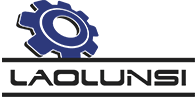Optimizing Gear Processing: The Impact of Software Integration
Optimizing Gear Processing: The Impact of Software Integration The manufacturing industry continues to evolve at a rapid pace, and within this transformation, gear processing stands out as a critical area benefiting from technological advancements. Optimizing gear processing through software integration not only enhances production efficiency but also elevates the quality of output. This article e
Optimizing Gear Processing: The Impact of Software Integration
The manufacturing industry continues to evolve at a rapid pace, and within this transformation, gear processing stands out as a critical area benefiting from technological advancements. Optimizing gear processing through software integration not only enhances production efficiency but also elevates the quality of output. This article explores the impact of software integration on gear processing, focusing on strategies, benefits, and future trends.
Table of Contents
1. Understanding Gear Processing in Manufacturing
2. The Role of Software in Gear Processing
3. Benefits of Software Integration in Gear Machining
3.1 Enhanced Efficiency and Productivity
3.2 Improved Quality Control
3.3 Cost Reduction Strategies
4. Key Software Solutions for Gear Processing
4.1 Computer-Aided Design (CAD)
4.2 Computer-Aided Manufacturing (CAM)
4.3 Enterprise Resource Planning (ERP)
5. Implementation Strategies for Seamless Integration
6. Case Studies: Successful Software Integration in Gear Processing
7. Future Trends in Gear Processing Software
8. Frequently Asked Questions (FAQs)
9. Conclusion
1. Understanding Gear Processing in Manufacturing
Gear processing is an integral part of manufacturing, particularly in industries such as automotive, aerospace, and robotics. This process involves several methods, including hobbing, shaping, and grinding, to produce gears that meet precise specifications. Each method requires careful planning and execution to ensure that the gears function correctly within their respective systems.
The demand for high-quality gears continues to rise, necessitating advancements in production techniques. By understanding the fundamentals of gear processing, manufacturers can leverage innovative solutions to stay competitive.
2. The Role of Software in Gear Processing
Software plays a crucial role in modern gear processing, facilitating everything from design to production. Integration of various software tools enables manufacturers to streamline operations, enhance precision, and reduce lead times. The right software solution can help in automating repetitive tasks, thereby allowing engineers and operators to focus on more strategic aspects of production.
Moreover, software integration allows for better data management and analysis, leading to informed decision-making. As the manufacturing landscape becomes increasingly complex, the importance of robust software solutions cannot be overstated.
3. Benefits of Software Integration in Gear Machining
3.1 Enhanced Efficiency and Productivity
One of the primary advantages of integrating software into gear processing is the significant increase in efficiency and productivity. Automated systems reduce the likelihood of human error, while real-time monitoring helps identify bottlenecks and inefficiencies in the production line. Consequently, manufacturers can optimize their workflows, leading to faster turnaround times and improved output.
3.2 Improved Quality Control
Software integration enhances quality control by providing real-time data analytics and monitoring capabilities. Advanced software systems can track production parameters and detect deviations from standards. This proactive approach allows manufacturers to address quality issues before they escalate, ensuring that the final products adhere to stringent quality standards.
3.3 Cost Reduction Strategies
Integrating software solutions can lead to significant cost savings. By automating processes and reducing waste, manufacturers can lower operational costs. Additionally, improved quality control minimizes the risk of rework and scrap, further contributing to cost efficiency. Ultimately, these savings can enhance the overall profitability of gear processing operations.
4. Key Software Solutions for Gear Processing
To maximize the benefits of software integration, manufacturers should consider implementing the following key solutions:
4.1 Computer-Aided Design (CAD)
CAD software enables engineers to create detailed digital models of gears and other components. This technology allows for precise measurements and adjustments, facilitating the design of complex geometries that meet specific functional requirements. Furthermore, CAD systems can simulate the performance of gears under various conditions, helping to identify potential issues before physical production begins.
4.2 Computer-Aided Manufacturing (CAM)
CAM software translates CAD designs into machine instructions, automating the manufacturing process. By integrating CAD and CAM systems, manufacturers can achieve a seamless transition from design to production. This integration enhances accuracy, reduces lead times, and minimizes the risk of errors during machining.
4.3 Enterprise Resource Planning (ERP)
ERP systems provide a comprehensive framework for managing all aspects of manufacturing operations, including finance, supply chain, and inventory management. Integrating ERP with production software ensures that all departments work in harmony, optimizing resource allocation and improving overall efficiency.
5. Implementation Strategies for Seamless Integration
To successfully implement software integration in gear processing, manufacturers should follow these strategies:
1. **Assess Current Processes**: Evaluate existing workflows to identify areas where software integration can bring improvements.
2. **Select the Right Software**: Choose software solutions that align with specific business needs and production requirements.
3. **Train Staff**: Provide comprehensive training for employees to ensure they are proficient in using new software tools.
4. **Monitor Performance**: Continuously track the performance of integrated systems to identify areas for further optimization.
5. **Iterate and Improve**: Be open to adapting and enhancing software solutions as technology evolves and business needs change.
6. Case Studies: Successful Software Integration in Gear Processing
Several companies have successfully implemented software integration to enhance their gear processing operations. For instance, a leading automotive manufacturer adopted a comprehensive CAD/CAM system, resulting in a 30% reduction in production time and a significant decrease in errors. Another case involved a robotics company that integrated ERP software, leading to improved inventory management and reduced lead times.
These case studies highlight the tangible benefits of software integration, demonstrating how it can transform gear processing and drive competitive advantage.
7. Future Trends in Gear Processing Software
As technology continues to advance, several trends are likely to shape the future of gear processing software:
- **Artificial Intelligence (AI)**: AI-driven analytics will enhance decision-making processes, providing predictive insights that can optimize production schedules and resource allocation.
- **Internet of Things (IoT)**: IoT integration will enable real-time monitoring of equipment performance, allowing for proactive maintenance and minimizing downtime.
- **Cloud Computing**: The shift towards cloud-based solutions will facilitate collaboration across teams and enhance data accessibility, leading to improved innovation and responsiveness.
Staying abreast of these trends will be essential for manufacturers looking to maintain a competitive edge in the evolving landscape of gear processing.
8. Frequently Asked Questions (FAQs)
What is gear processing?
Gear processing involves various manufacturing methods to create gears that meet specific design and functional requirements.
How does software integration improve gear processing?
Software integration enhances efficiency, improves quality control, and reduces costs by automating processes and providing real-time data analytics.
What are the key software solutions for gear processing?
Key solutions include Computer-Aided Design (CAD), Computer-Aided Manufacturing (CAM), and Enterprise Resource Planning (ERP) systems.
How can manufacturers ensure successful software integration?
Manufacturers can ensure success by assessing current processes, selecting the right software, training staff, monitoring performance, and iterating as needed.
What future trends should manufacturers be aware of in gear processing?
Manufacturers should pay attention to trends like AI, IoT integration, and cloud computing, which will shape the future of gear processing software.
9. Conclusion
In conclusion, optimizing gear processing through software integration is an essential strategy for manufacturers looking to enhance productivity, improve quality, and reduce costs. By leveraging advanced software solutions, manufacturers can streamline operations and stay competitive in a rapidly evolving industry. As we look to the future, embracing technological advancements and staying informed about emerging trends will be crucial for continued success in gear processing. Through strategic software integration, manufacturers can not only meet the demands of today’s marketplace but also innovate for the challenges of tomorrow.
Recommended Blogs
Optimizing Gear Processing: The Impact of Software Integration
Optimizing Gear Processing: The Impact of Software Integration The manufacturing industry continues to evolve at a rapid pace, and within this transformation, gear processing stands out as a critical area benefiting from technological advancements. Optimizing gear processing through software integration not only enhances production efficiency but also elevates the quality of output. This article e
Understanding Planetary Gear Cutting Machines: A Comprehensive Guide
Planetary gear cutting machines play a vital role in the manufacturing and processing of gears, particularly in the production of high-precision components that are essential in various industries, including automotive, aerospace, and robotics. These machines are specifically designed to create gears with complex geometries, utilizing a unique cutting mechanism that allows for efficient and accura
Unlock Precision: How Gear Machining Centers Enhance Manufacturing Efficiency
Unlock Precision: How Gear Machining Centers Enhance Manufacturing Efficiency Manufacturers today are consistently on the lookout for methods to improve their processes, reduce costs, and enhance product quality. One of the most revolutionary advancements in the industry is the introduction of **gear machining centers**. These specialized machines are not just tools; they are game changers that el







